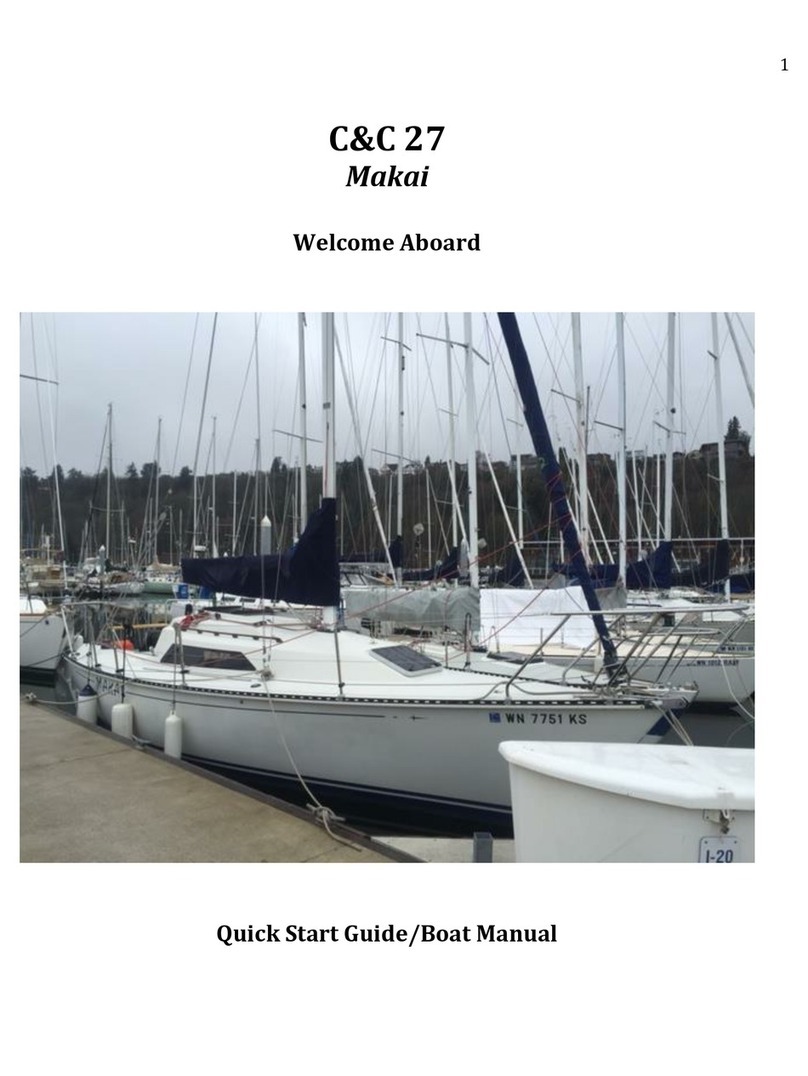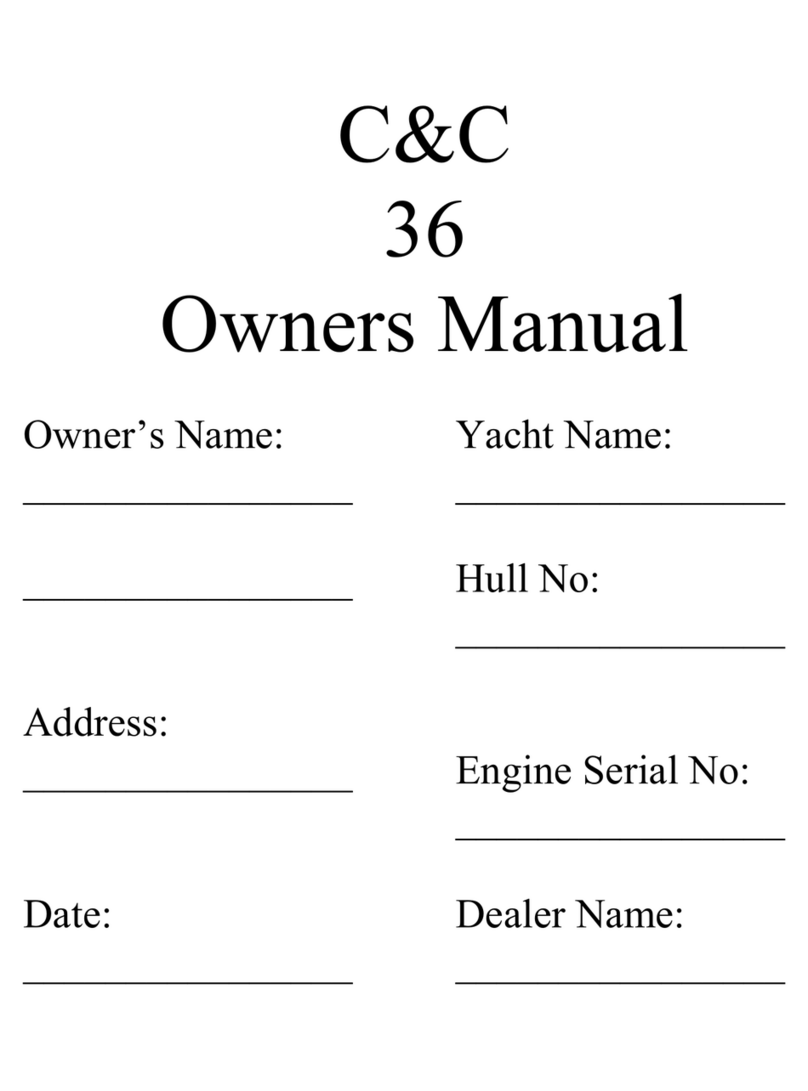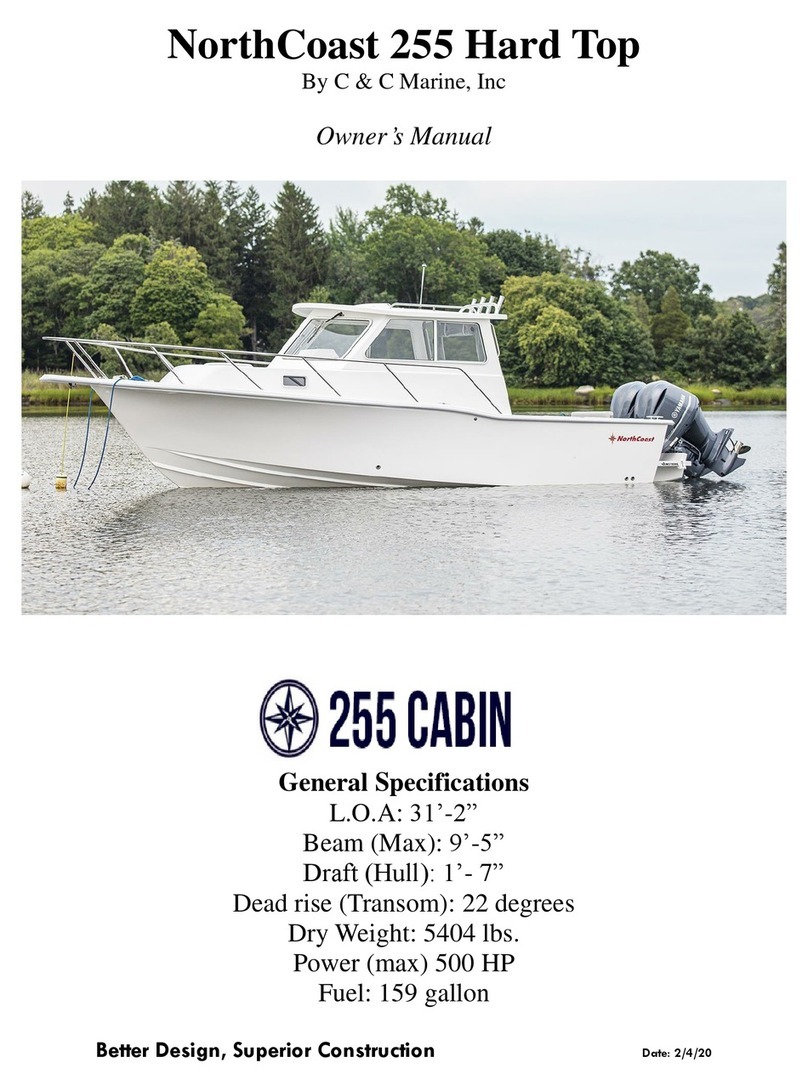
2
C&C 27
Pendragon
- Boat Manual
Seattle Sailing Club
Welcome aboard our C&C 27, Pendragon, designed as a pocket cruiser with great sailing
performance. We are doing everything possible to make sure this boat is always ready to go.
Please treat her with the care she deserves, like she is your own boat. This manual is designed
to make your journey easier and give you the extra information underway you may be
seeking. Help us out by filling out and turning in the user reports each trip so we can continue
providing the safest and best equipment possible. Thanks and have a great sail! SSC
C&C 27s are some of the favorite boats in our fleet for the following reasons:
Day sailing performance
Comfortable cabin with sleeping quarters in v-berth, main settee and a quarter berth.
Working galley with a two burner propane cooktop, ice box and fresh water galley sink.
Marine toilet with a 20 gallon holding tank.
Fully reefable main sail with two reef points
Roller furling headsail with reef marks
Inboard diesel engine
Shore power with outlets and battery charger
Cabin lights, running lights and anchor light.
Bruce anchor with a total of 50 feet of chain and 100 feet line with a bow roller and locker
Pendragon’s
Challenges - Things to Know
Pendragon has a one cylinder diesel so she needs extra throttle in neutral when pushing the start
button. Once started, run at 1500 RPM for a couple minutes to warm up engine. Also, underway
you may need extra throttle to get moving especially into a headwind.
Pendragon has quite a strong prop walk to port when in reverse. Be prepared to throttle down if the
boat is pulling sideways more than desired. Have a roving fender handy if necessary.
Use great care when easing the topping lift! If you accidentally let this cleat go the boom could
land on your sailing mate’s head and cause an injury! Ease slowly. Pendragon’s topping lift is found
at the mast with knots at adjustment points. See picture p. 24
Always ease the boom vang, main sheet and reefing lines before raising the main sail.
Don’t stand on the forward hatch as it is prone to breaking.






























